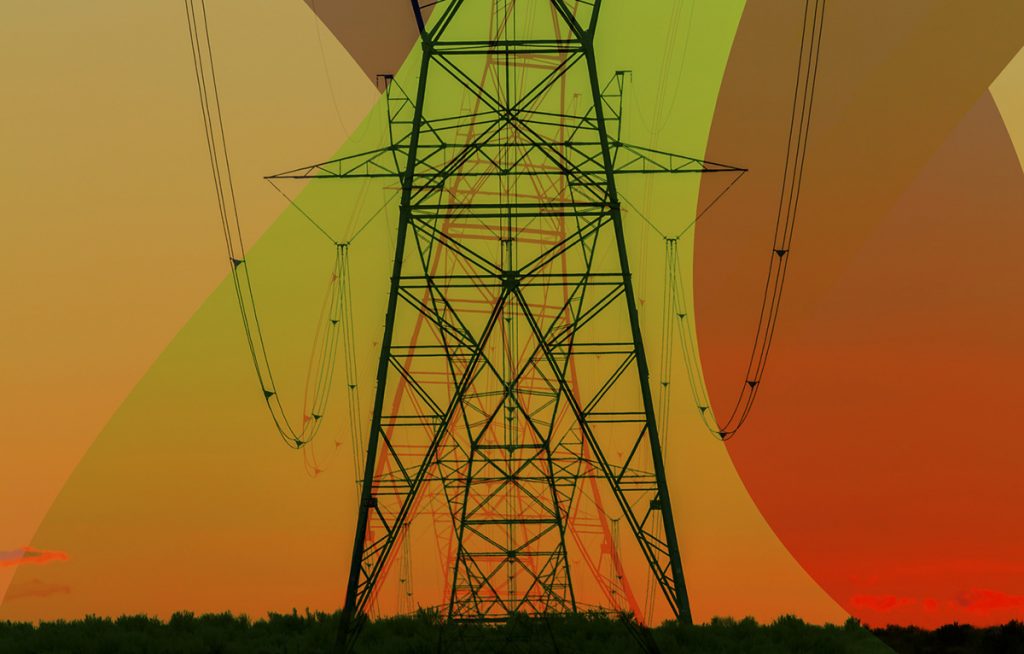
June 27, 2019

NETWORK NEWS
The electrical grid was a world-changing concept when it was first hooked up more than a century ago — but there was no way even Thomas Edison could’ve envisioned the uses for electricity we’re finding in the digital age. The ability to charge up a device almost anywhere is just the beginning: Electrical power is the very lifeblood of our connected times. But it’s lagging behind, and utilities are racing to keep up with not just the increasing demands humans are placing on the grid, but the novel energy sources we’re putting into it, too — like renewables. “The grid is the smartest and most complex machine that humans ever built,” said Jamshid Sharif-Askary, chief architect at GE Renewable Energy’s Grid Solutions unit. “But we are pushing it beyond its limits.” It’s Sharif-Askary’s job to help the grid catch up.
The great communicator: One of the tools he’s using is a new device, the MDS Orbit. Barely larger than a hardcover book, the Orbit helps utilities manage the flow of information across and among wireless networks and locations, translating effortlessly between the digital languages of 3G, LTE and more. If part of an electrical network goes down during a storm, for instance, the device can switch to a different communication mode, such as from LTE to radio, so utilities don’t lose access to critical assets. It’s a crucial step on the road to a truly digital grid, said Vera Silva, chief technology officer of GE Grid Solutions: “A combination of digital and physical tools will help utilities integrate solar and wind farms, energy storage, and other distributed resources and improve the utilization of assets. Basically, we need to give them the right controls to activate the right resources in real time, orchestrated by a good maestro.”
Learn more here about how this small device can have a big effect on the electrical grid.
WE’LL ALWAYS HAVE PARIS
The first nonstop westbound flight between Paris and New York took 37 hours and 12 minutes — enough time to watch a whole lot of in-flight movies, except for the fact that the plane making the trip, a Breguet 19 Super Bidon biplane called Point d’interrogation (Question Mark), didn’t come equipped with seatback TV screens. No drink service, either. Just how much has changed since that record-breaking 1930 flight was evident last week at the Paris Air Show, held on the same field that the Question Mark took off from. (Once Paris’ main airport, it’s now home to the National Air and Space Museum.) In fact, one of the machines on display at the show was another trans-Atlantic pioneer — this one a new, superefficient single-aisle Airbus A321neo that can ferry passengers from the French capital to Newark, New Jersey, in business class comfort.
Pics or it didn’t happen: That Airbus jet is powered by the LEAP engine — developed by CFM International, a 50-50 joint venture between GE and Safran Aircraft Engines — which provides double-digit gains in fuel efficiency and allows planes to fly farther while also lowering carbon emissions, oxides of nitrogen emissions and noise. But the LEAP engine wasn’t the only piece of GE expertise and creativity on display in Paris. GE Reports was on the scene, walking the tarmac and exhibition halls and taking snapshots of the coolest aviation tech we came across. Click here to see what we found.
OFF THE MAP
Neuroscientists are increasingly enamored with brain maps, reports Singularity Hub’s Shelly Fan — colorful, comprehensive pictures of the brain down to the single neuron. Doctors can use brain mapping to understand the fine points of neurological structure and function, and also as the basis for, say, smart algorithms that help them spot abnormalities like tumors. It should come as no surprise, though, that brain mapping is a tricky business. To be truly useful to researchers, all those disparate regions have to be not only imaged but also annotated; after all, what good is a blank map? It’s such delicate and time-consuming work that annotation itself requires a pretty quick brain to complete. Better yet, an artificial one.
Major brain gains: Now scientists are employing deep learning software to map and annotate the brain. Using microscopic images from mouse brains, a team from the University of Zurich’s Brain Research Institute developed an algorithm that was able to match human performance in identifying parts of the brain; it performed well when analyzing human brain scans, too. The advance helps researchers toward their goal of “syncing up” brain images, gaining the ability to compare one image against others in order to locate problems. Fan writes, “Similar to how Google Maps integrates a classic, terrain, street, and satellite view, brain map syncing will undoubtedly paint a much richer landscape of our brain’s landscape and connection highways, in health and disease.”
There’s a lot more to learn — about the brain, and about brain mapping. Click here for Singularity Hub’s rundown.
— VIDEO OF THE WEEK —
— QUOTE OF THE DAY —
“There is no one-size-fits-all solution. We wanted to offer our customers one common platform that is customizable to fit the different wireless needs across their networks.”
— Steven Ruggieri, senior product manager at GE Renewable Energy’s Grid Solutions business
Quote: GE Reports. Image: Getty Images.
ENJOY THIS NEWSLETTER?
Please send it to your friends and let them know they can subscribe here.




